Should we really be aiming for a seamless customer experience?
- Like
- Digg
- Del
- Tumblr
- VKontakte
- Buffer
- Love This
- Odnoklassniki
- Meneame
- Blogger
- Amazon
- Yahoo Mail
- Gmail
- AOL
- Newsvine
- HackerNews
- Evernote
- MySpace
- Mail.ru
- Viadeo
- Line
- Comments
- Yummly
- SMS
- Viber
- Telegram
- Subscribe
- Skype
- Facebook Messenger
- Kakao
- LiveJournal
- Yammer
- Edgar
- Fintel
- Mix
- Instapaper
- Copy Link
Posted: 28 August 2023 | Courtney Moore | 1 comment
For International Airport Review’s Issue 2 2023, Courtney Moore, Assistant Vice President of Terminal Experience at Dallas Fort Worth International (DFW) Airport, shares her insight into balancing a seamless (and therefore perhaps, forgettable) with a memorable, connected travel experience.
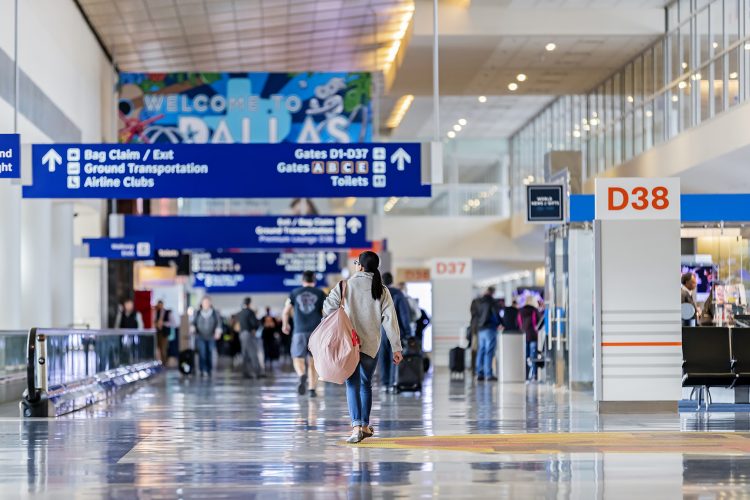

DFW's Terminal D Interior. Credit: DFW Airport
In 2020, the Journal of Air Transport Management proposed the view of airports being experience providers in ‘Airport User Experience Unpacked: Conceptualising its potential in the face of COVID-19’.
As technology advances, the following article discusses how to resonate with passengers meaningfully, rather than curating an environment so seamlessly it becomes unmemorable.
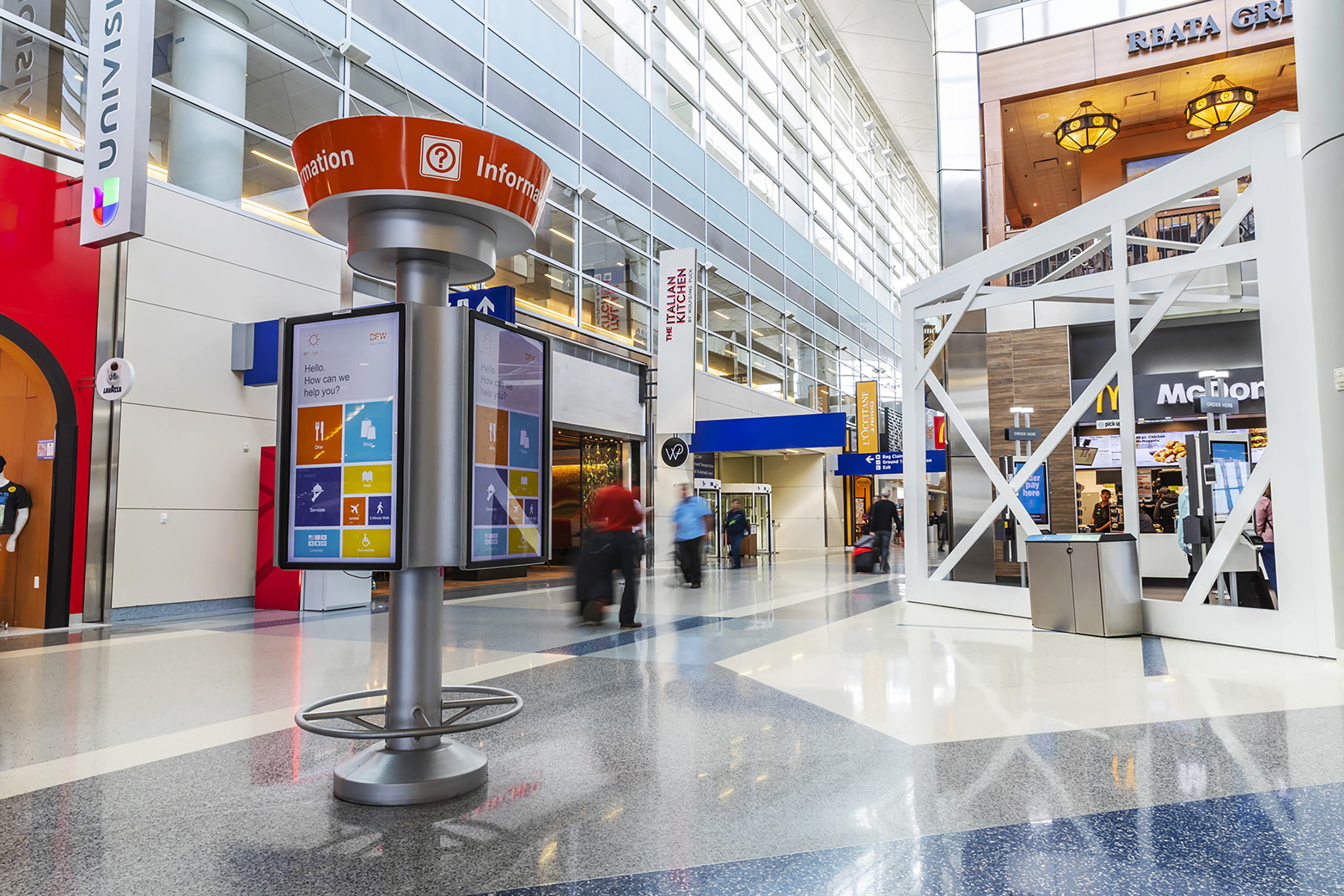

DFW’s help points. Credit: DFW
Salient connections or seamless experiences?
At DFW, we have an advanced Consumer Insights and Analytics team. We participate in industry customer satisfaction benchmarking surveys, conduct our own internal satisfaction surveys, complete ad hoc surveys to help us answer specific questions, and provide many other types of passenger analyses.
Recently, our brilliant new Market Research Manager was reviewing the results of a study when I posed another question that I had been toying with: what has defined his experience with his bank?
we’ve taken aspects of a passenger’s experience and modified them ever so slightly to capture thresholds where passengers have noticed a difference in their environment
I shared that since most banking is automated now (whether through receiving cash from an automated teller machine or navigating online banking) most banks offer a suite of comparable competitive services. Without a teller with whom you have a rapport, what connected his loyalty to his bank?
He replied saying that it wasn’t until something went wrong and he had to call the service number that he had a very memorable interaction. One of their customer agents helped him in a warm and extremely helpful manner and that had helped him to connect memories with his bank. Prior to that interaction, he didn’t really have a memory of his bank but afterwards, he was a complete fan.
That very concept is what I asked him to study next: how are resonating, human connections being made between passengers and our airport if we’re constantly striving for seamless experiences?
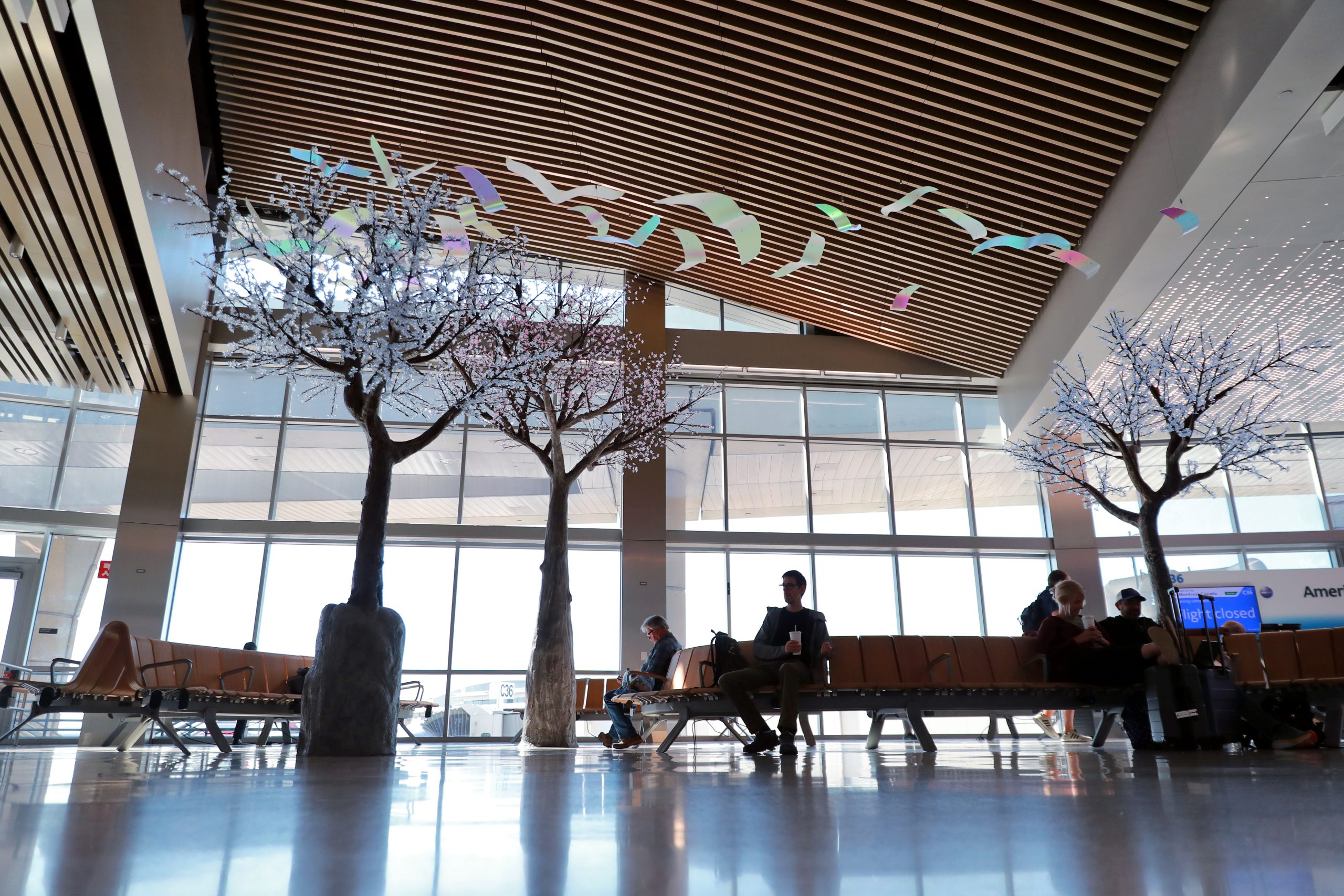

Terminal High C Gate at DFW. Credit: DFW
Too low of an aspiration
In conversations with technology consultants, other partners at industry conferences, and benchmarking at other airports, I frequently hear that achieving a seamless airport experience is a goal. While we don’t want our customers to have a turbulent experience (especially when our second busiest airport in the world covers more square miles than the island of Manhattan), I don’t often hear of experiential offerings (like trendy restaurants or reassuring marketing tactics).
What I do hear, is how they’ll offer an unforgettable, novel and resounding experience. If we’re striving to be seamless, might that be too low of an aspiration? If we also want to create loyalty with our brand, and inspire salient connection, excitement and wonder through travel, aren’t we setting the benchmark too low?
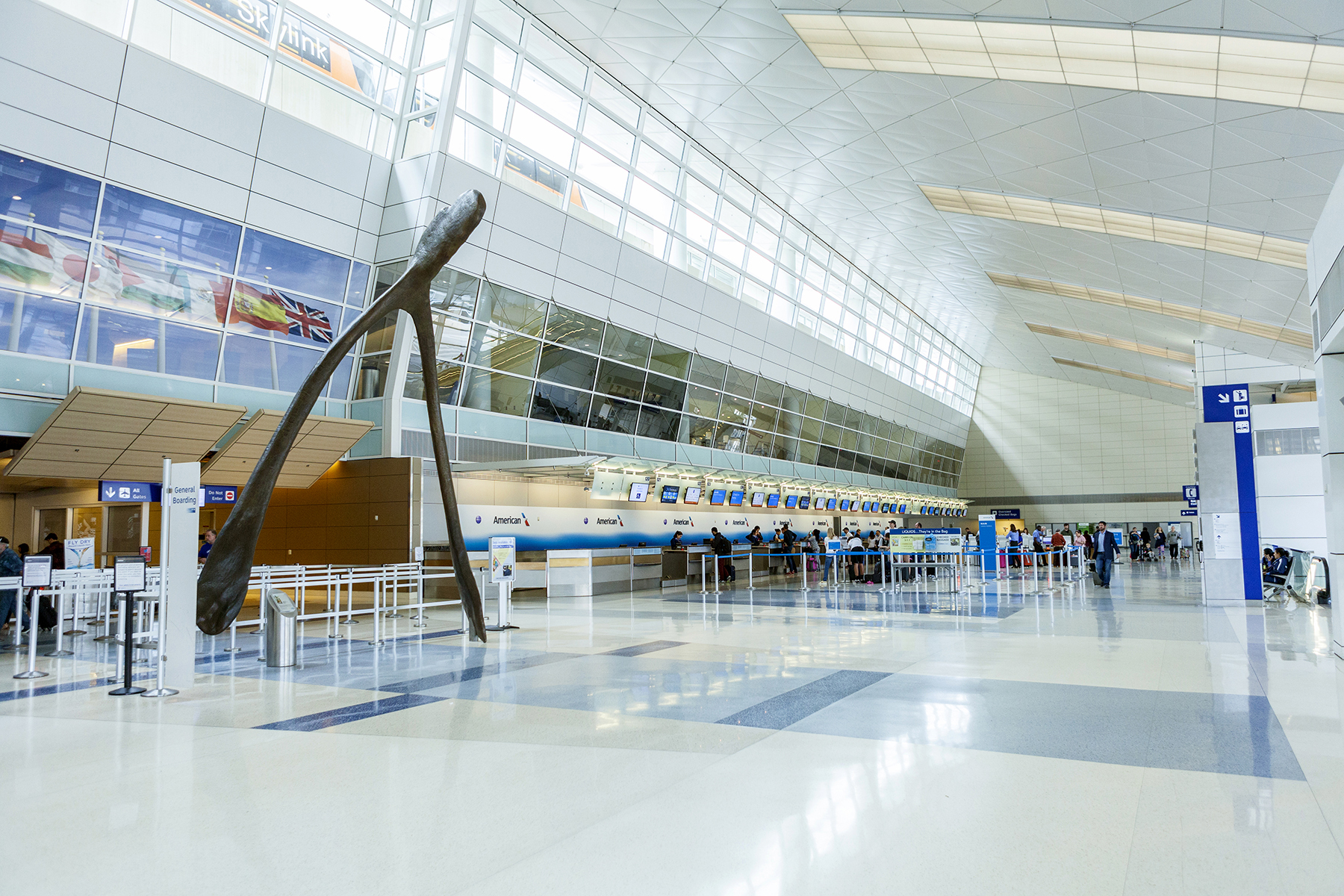

DFW Terminal Wishbone. Credit: DFW
I lead our Terminal Experience and Integration teams for DFW Airport. The Terminal Experience team focus on every operational and experiential element in our five terminals to facilitate an exceptional airport experience for our millions of passengers, while being the key airport representative for our valued collaborative partners in our ecosystem to align experiences for passengers across organisations. Our Integration Team connects the work our other internal departments and external stakeholders conduct with our terminal standards and leads customer journey continuous improvement efforts.
To prioritise our efforts and create the desired experience, we study more than the survey responses our passengers provide. We have built capabilities for rich experimental design, leveraging in-house industrial engineers, user experience empathy mapping and behavioural science to capture what our passengers may not articulate.
Some of the most interesting studies I’ve built with our Consumer Insights and Analytics team have been ‘just noticeable difference’ measurements where we’ve taken aspects of a passenger’s experience and modified them ever so slightly to capture thresholds where passengers have noticed a difference in their environment and note the related effect that has on their mood, perception and satisfaction levels.
how are resonating, human connections being made between passengers and our airport if we’re constantly striving for seamless experiences?
These studies have produced insights that passenger congestion is a leading variable in the perception of cleanliness and has helped identify which aspects of a gate area are most important in keeping clean. It has also demonstrated the levels of congestion and where satisfaction starts to decrease because of passenger cramping and confinement, and a multiplicity of other findings. This all helps to enable operational and facilities design work which helps support how a passenger will feel within a space.
The experimental design capabilities have led us to identify insights such as the differences in what passengers, say, think, do and feel. Rather than simply installing industry-accepted solutions in a self-service technology pilot, we captured how user interfaces weren’t usefully catching passengers’ attention to prompt the desired action, and enabling changes that ease and delight the interaction.
Capturing these sub-steps, and tailoring the solution with the provider, airports can curate unexpected interactions based on the airport’s brand personality. It helps to exceed the minimum of meeting travellers’ needs. These research approaches also measured the difference in the perceived wait time and perceived officer courtesy. On whether Transportation Security Administration (TSA) PreCheck passengers waited in a dedicated or blended queue with general boarding passengers, the research further tailored the experience to the users’ emotions over utility. Naturally, we still use these capabilities to assess utility at scale by simply measuring how accurate a technology’s accuracy claims are, so we invest in the solutions we need for the result we’re aiming to drive.
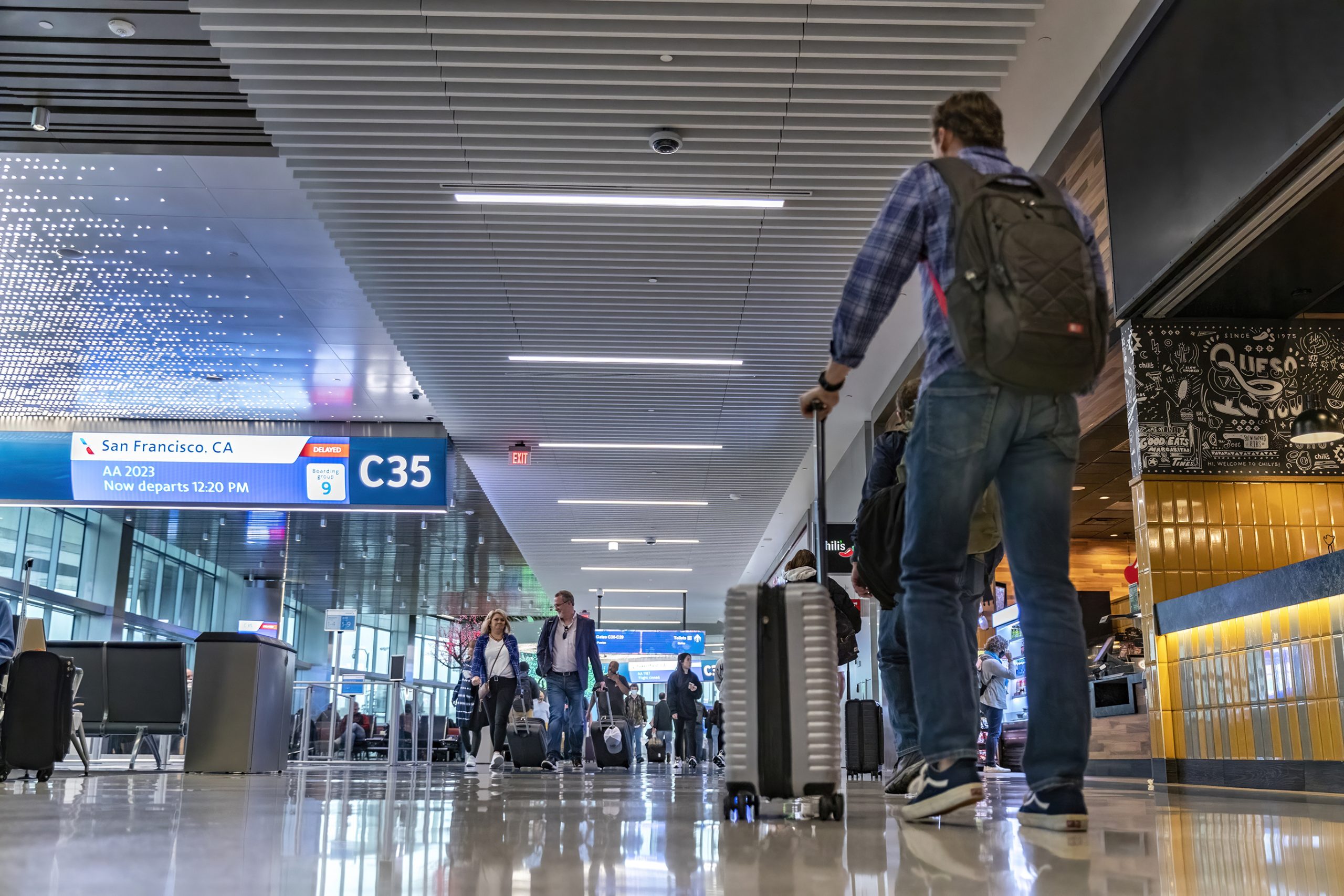

Credit: DFW
Forging new connections
As airports, much like banking and other industries, increasingly automate various touchpoints in pursuit of the most seamless journey, these capabilities are enabling us to evaluate which technology solutions provide the solutions for passengers we believe offer more control and options that make the travel experience easier to navigate, as well as which solutions are most accurate in reliably capturing the data we’ll use to optimise the passengers’ experience.
While we make significant advancements in assessing the impact of technology at specific touchpoints, and on how we use the data captured from that technology, and as the market makes advancements in the development of new solutions, identifying the emotional impact of a more technologically equipped journey and seamless solutions for our airport are in early stages of development.
During the Airports Council International (ACI) Europe Annual Congress and General Assembly last June, a speaker shared that people travel because they want to feel emotions — emotions of seeing unknown places, and emotions of forming new connections, whether personal or business. As DFW Airport continues to welcome new levels of increased passengers through our facilities, we’ll have to continue to efficiently meet the needs of our travellers, but also consider how we create unforgettable moments and novel experiences to generate those connections and emotional saliency with the airport.
The modernisation of airports has so much potential for streamlining touchpoints to reduce friction, while also prompting much to be studied to balance technology with maintaining a lasting, loyal connection with our passengers.


About the author
Courtney Moore serves as Assistant Vice President of Terminal Experience at Dallas Fort Worth International Airport.
Her responsibilities include Customer Experience, Terminal Management, and Terminal Integration and Standards. In her role, Moore provides strategic and operational leadership to elevate DFW as a global airport innovator in customer experience.
Her focus is on examining systems to reinforce a customer-centric culture and aligning operating realities of service within the airport’s five terminals. By building relationships with key external constituencies and internal departments, Customer Experience supports and promotes DFW Airport’s strategic plan through end-to-end customer service.
Moore previously served NBCUniversal and The Walt Disney Company, where she was responsible for multiple lines of business at Universal Studios Hollywood and Disneyland campuses.
Over 13 years, she led different teams, representing industrial engineering, supply chains, operations centers, health services, data analytics, wardrobe and food & beverage. Moore’s experience also includes behavioural science research, strategy development, and industrial and human factors engineering. Moore holds degrees in Psychology, Industrial and Human Factors Engineering, and Business Administration.
Issue
Related topics
New technologies, Operational efficiency, Passenger experience and seamless travel, Social responsibility, Terrorist attacks
Related airports
Related organisations
Airports Council International (ACI Europe), Transportation Security Administration (TSA)



















Great article Courtney. As a DFW Ambassador, have you or your team spoken with the Ambassadors for their feedback? We interact throughout the day with DFW’s Customers.
Regards,